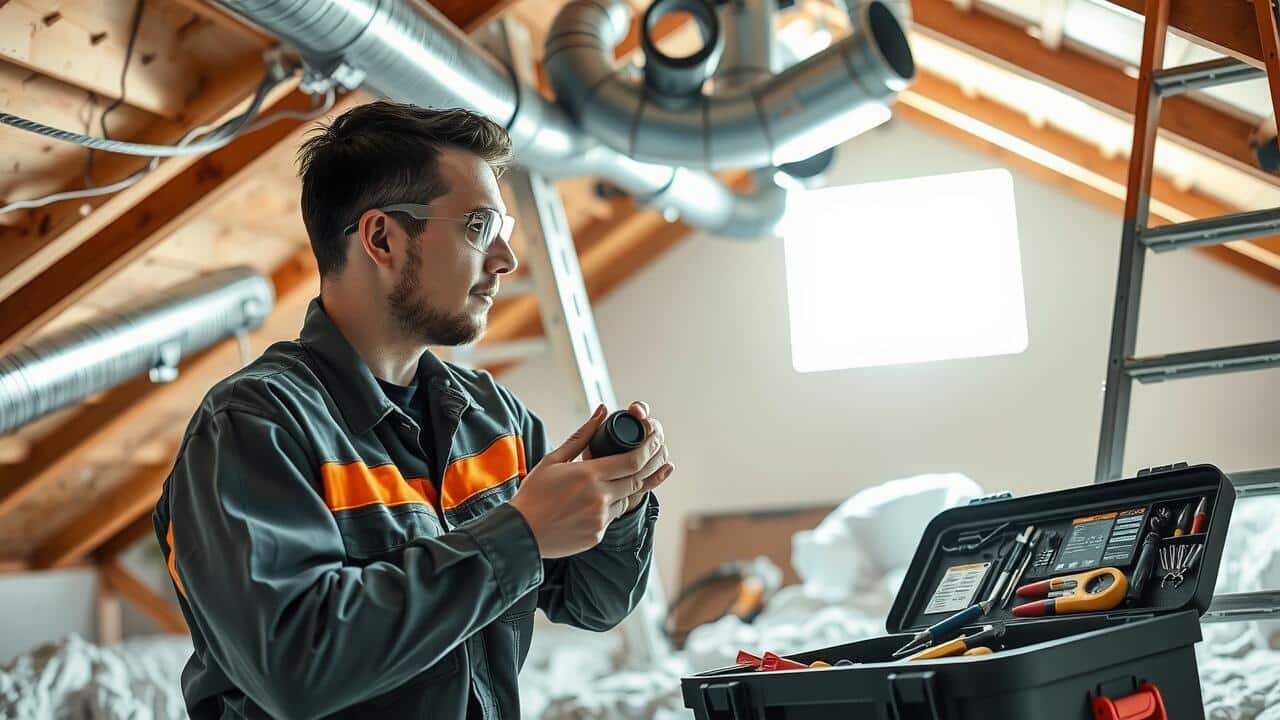
Table Of Contents
Using a Vacuum to Check for Blockages
Using a vacuum can be an effective method for air duct troubleshooting, as it helps determine if blockages are present. Start by removing the vent covers and inspecting the visible ductwork for any obstructions. Position a vacuum hose into the duct to remove debris. Keep the vacuum running while monitoring airflow, which should noticeably change if there is a significant blockage.
After vacuuming, check the airflow at nearby registers to assess improvements. If airflow increases, this indicates that the blockage may have been cleared. However, if you still notice inadequate airflow, further investigation is required. This could involve examining additional sections of the ductwork or utilizing more advanced methods to identify hidden obstructions.
Methodology for Effective Vacuuming
To effectively use a vacuum for air duct troubleshooting, begin by selecting the right equipment. A vacuum with strong suction power is essential to dislodge any debris or blockages within the ducts. Ensure the vacuum is equipped with appropriate attachments that can reach deep into the ductwork. Before you start vacuuming, remove the vent covers to access the ducts. This preparation allows for a thorough cleaning and inspection of the internal surfaces.
Once everything is set up, carefully insert the vacuum nozzle into the duct. Move it slowly along the length of the ductwork, making sure to cover all areas. Pay close attention to any bends or turns in the ducts, as these are common points where debris can accumulate. After vacuuming, examine the removed vent covers for dust and dirt buildup. This process not only helps clear blockages but also provides insight into the overall condition of the air ducts.
Assessing Air Pressure Differences
Assessing air pressure differences within your air ducts is a critical step in air duct troubleshooting. Variations in air pressure can indicate blockages or leaks. You can perform this assessment by using a manometer to measure the pressure at different points in the ductwork. By comparing these readings, you can identify sections with significantly lower pressure, which usually suggests an obstruction or inadequate airflow.
Another effective method involves turning on your HVAC system and observing how airflow changes from room to room. If you notice that some areas receive little to no airflow while others are significantly stronger, this trouble can often point to blockages in the ducts. Regular assessments of air pressure contribute to a better understanding of your system’s efficiency and help pinpoint areas that may require further attention.
How to Measure Pressure in Ducts
Measuring pressure in ducts is an essential part of air duct troubleshooting. Start by locating the supply and return ducts in your system. Use a manometer, which is a device that can measure airflow pressure, to get accurate readings. Attach the manometer’s probes to the designated ports on the ducts. This setup allows you to assess both negative and positive pressure levels, providing insight into potential blockages.
Analyze the readings obtained from the manometer to identify discrepancies in air pressure between the supply and return ducts. Significant differences can indicate airflow restrictions caused by dirt, debris, or mechanical issues. A consistent flow of air is crucial for maintaining efficiency in your HVAC system. By keeping track of these measurements regularly, you can stay ahead of problems and ensure optimal performance.
Professional Inspection vs. DIY
When it comes to air duct troubleshooting, homeowners often face the dilemma of whether to attempt a DIY inspection or hire a professional. Engaging in simple checks, such as looking for visible debris or assessing airflow at vents, can provide preliminary insights. However, many blockages may not be evident without specialized tools. A thorough understanding of ductwork and the ability to interpret findings is essential for effective DIY efforts.
Professional inspections offer several advantages, particularly for complex issues. Technicians possess the expertise and equipment necessary to diagnose problems that may go unnoticed in a casual assessment. They can perform in-depth evaluations, including pressure testing and detailed cleaning, which helps ensure the system operates efficiently. While DIY can be a cost-effective solution for minor concerns, significant issues typically warrant a professional’s intervention.
When to Call a Specialist
Air duct issues can sometimes be complex. If you find persistent signs of blockage despite your efforts with DIY methods, it may be time to consider professional assistance. A specialist in air duct troubleshooting possesses the tools and expertise to identify underlying problems that are not always visible.
When experiencing drastic temperature fluctuations in your home or unusual noises from the ductwork, these could indicate deeper issues. Engaging a professional ensures a thorough inspection and offers peace of mind. They can recommend the best course of action tailored to your specific situation.
FAQS
What are the signs that my air duct might be blocked?
Common signs of a blocked air duct include reduced airflow from vents, increased energy bills, unusual noises from the ducts, and uneven heating or cooling in different areas of your home.
Can I use a regular vacuum cleaner to check for blockages in my air duct?
Yes, you can use a regular vacuum cleaner to check for blockages, but make sure it has sufficient suction power. It’s best to use a vacuum with a hose attachment for better access to the duct openings.
How do I measure air pressure in the ducts?
To measure air pressure in the ducts, you can use a manometer or an anemometer. Insert the device into the duct at various points to assess pressure differences, which can indicate blockages.
When should I consider hiring a professional for duct inspection?
If you notice persistent airflow issues, strange smells, or if you’re uncomfortable performing DIY checks, it’s wise to hire a professional. They have specialized tools and expertise to diagnose and resolve duct problems safely.
How often should I check my air ducts for blockages?
It’s recommended to check your air ducts at least once a year, especially before the heating or cooling season, to ensure optimal performance and prevent potential blockages.
